Lately all my garment patterns have been for magazines, so I decided it was time to self publish a cardigan pattern. V-neck cardigans are my go-to sweater, especially when worked in a soft and warm yarn like City Tweed! Creating color palettes is a secret passion of mine, and for this pattern I chose bright elementary colors paired with a neutral grey. The flecks of tweed in the yarn tone down the bright colors and make a much more interesting fabric.
FINISHED MEASUREMENTS
Chest: 31 (34, 37, 40)[43, 46, 49, 52]”
Length: 23.5 (24, 24.5, 25)[26,26.5, 27, 27.5]”
MATERIALS
Knit Picks City Tweed Aran/HW (55% merino wool, 25% superfine alpaca, 20% Donegal tweed; 164 yds/150 m per 100 g ball) Color A: Orca (grey), 4 (5, 5, 6)[6, 7, 7, 8] balls;
Color B: Romance (red), 1 ball; Color C: Cobalt (blue), 1 ball; Color D: Lemon Curd (yellow), 1 ball.
NEEDLES
US #8/5 mm 16” and 24” circular needles and set of dpn
US #7/4.5 mm 24” circular needle and set of dpn
NOTIONS REQUIRED
6 one inch wide buttons
Sewing thread to match buttons
Sewing needle
3 stitch holders (or waste yarn)
Tapestry needle to weave in ends
2 removable stitch markers or safety pins
2 stitch markers
GAUGE
16 sts and 22 rows = 4” in Stockinette Stripe using larger needles
SKILLS NEEDED
tubular cast on
three needle bind off
RLI (right lifted increase)
LLI (left lifted increase)
k2tog
ssk
p2tog
ssp
short rows
picking up stitches
working in the round
$6.00

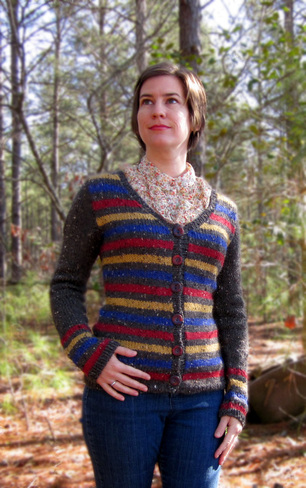
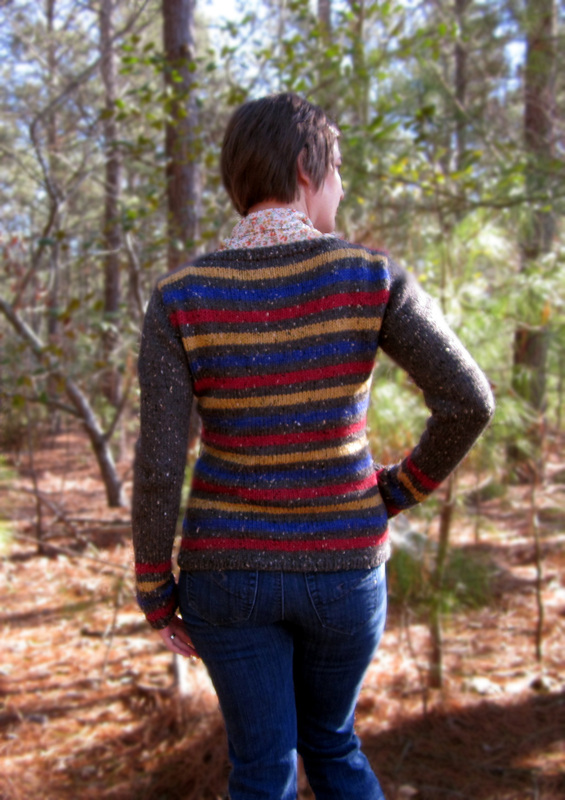

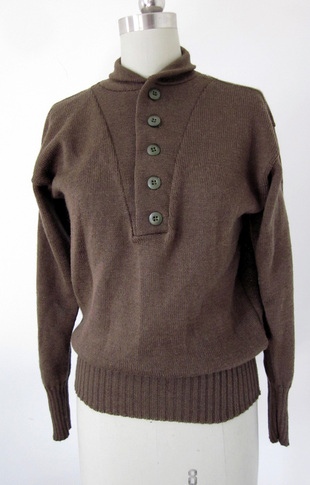
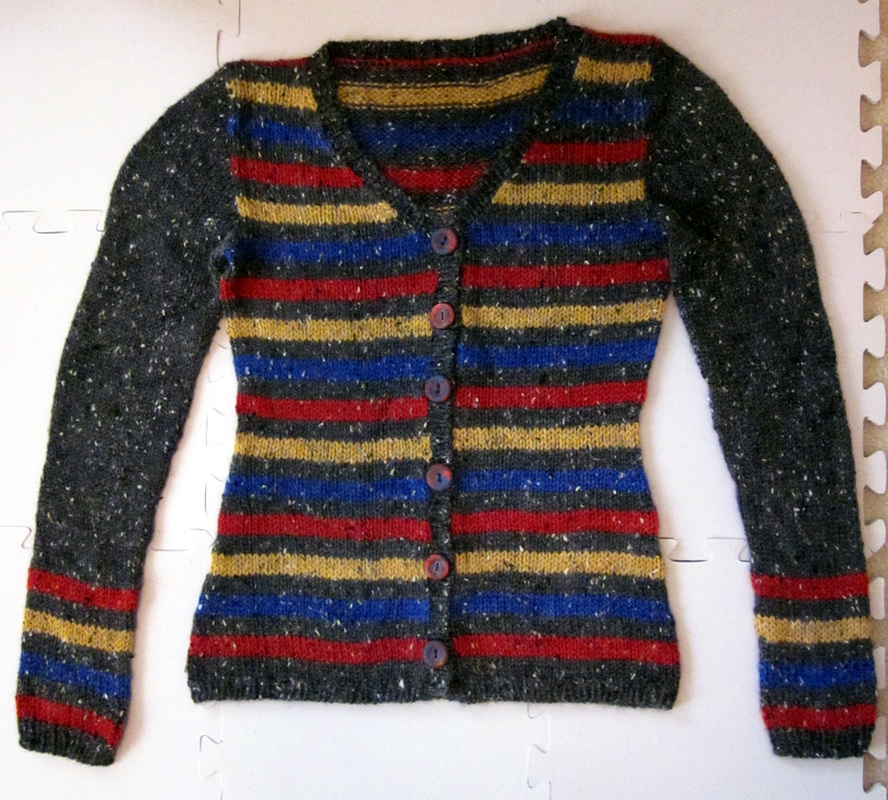
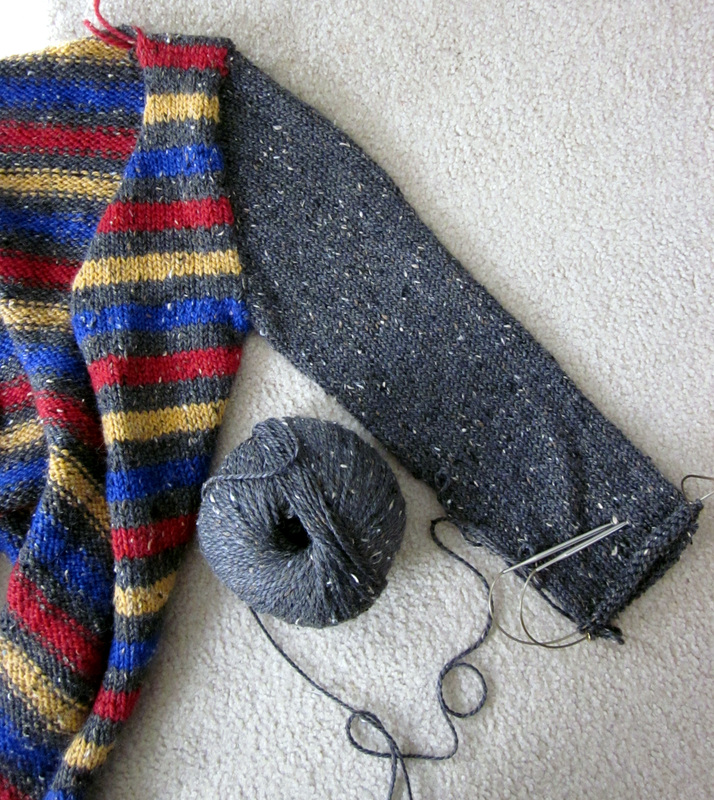

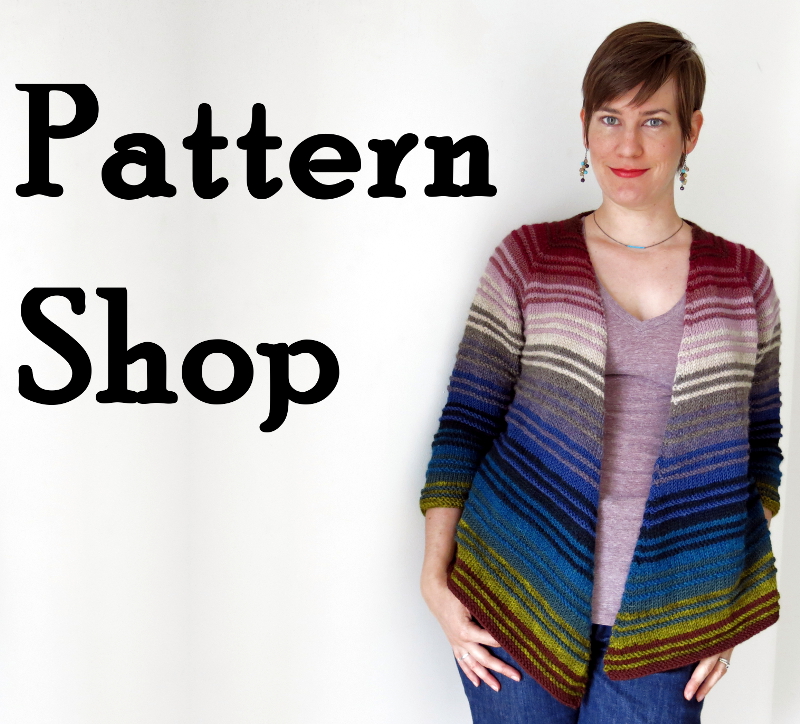
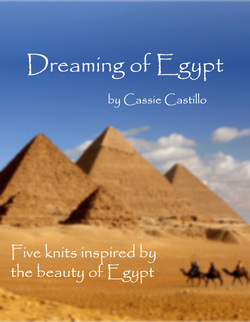
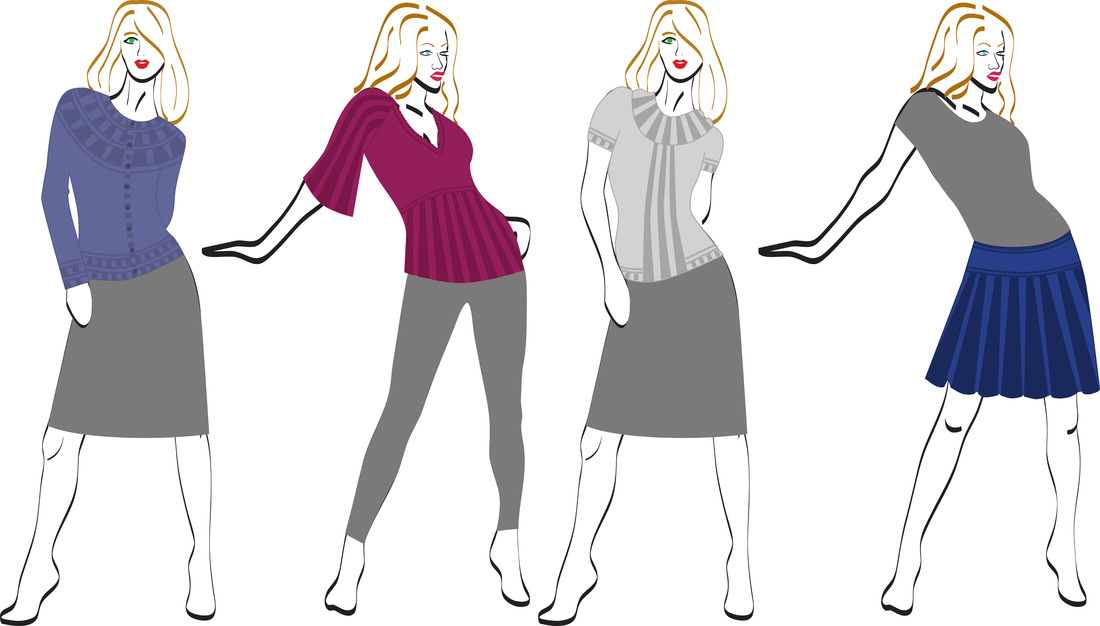
 RSS Feed
RSS Feed
